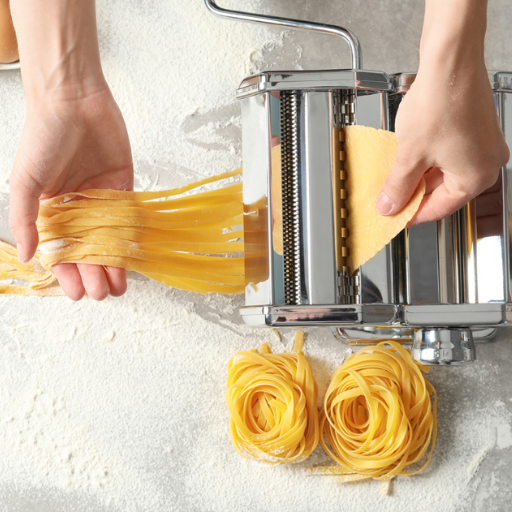Creating fresh pasta from scratch in your kitchen can take your cooking to a whole new level; even the most basic of meals will be transformed into something unique. In this article, we will discuss some of the top noodle makers currently available for purchase so that you have all the information necessary to select one perfect for your home needs. Whether you are just starting and want something affordable or an experienced cook looking for more control over their pasta-making process, we have what you need! Join us as we look at these machines’ features, benefits, and customer reviews, which will help ensure that pasta-making becomes second nature for anyone who uses them.
What are the Different Types of Pasta Maker Machines?
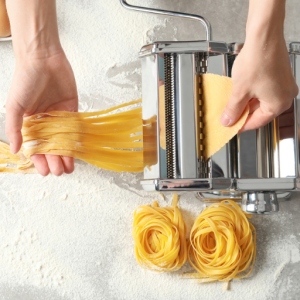
Image source: https://www.thedailymeal.com/
There are two types of homemade noodle-making machines: manual and electric. Manual ones offer a traditional and enjoyable process, which necessitates rolling out and cutting the dough by hand, thus allowing for a closer experience. Thickness settings that can be adjusted and several attachments for different pasta shapes usually come along with these devices, making them suitable for any home chef’s needs. Alternatively, electric pasta makers automate most parts of this procedure, allowing faster production of noodles within a shorter period than ever before. These devices are often equipped with built-in rollers and cutters, reducing the effort put into them while ensuring consistent results every time without much physical work. As with anything, there are pros and cons, so what type you choose will depend mainly on personal preference or cooking style.
Manual pasta Makers Versus Electric pasta Makers
Many things should be considered when comparing electric pasta makers with manual ones. Hand-operated pasta machines have been praised for their simplicity and the physical sensation they offer. They allow you to control the thickness of the pasta more easily than electric machines do and usually cost less, too, which is why they may attract more beginners. Nevertheless, they take longer to use.
In contrast, an electric-powered pasta-making device greatly minimizes the required physical labor. Its strong point lies in speed and efficiency; it can produce large quantities of spaghetti within a short period – automation does have its price, though, because such models are generally more expensive. These appliances are designed for those home cooks who often cook pasta but want something that’s both quick and good quality at the same time. Ultimately, whether one chooses a hand or an electric-powered machine depends on personal preferences regarding cooking times and investment in effort. Every option has its benefits aimed at enhancing culinary experiences.
Features to Look for in a Pasta Maker Machine
To ensure that you find the model of the making machine that suits your needs, there are several important factors that should be considered:
- Adjustable Thickness Settings: You need to look for a good range of different options that can be used to adjust pasta thickness so as to make various kinds, starting from wide, chunky lasagna sheets up to thin, delicate angel hair ones.
- Durability and Build Quality: The machine must be strong enough, usually made of stainless steel or high-quality plastic; this will guarantee its long-lastingness and reliable performance, especially when handling dough.
- Ease of Use and Cleaning: It is recommended to opt for models that provide simplicity in usage, meaning they have easy operational mechanisms; moreover, such devices should contain surfaces with detachable parts, thus enabling quick washing after cooking.
- Attachments and Accessories: Some machines are that have additional extensions meant to create different shapes, like ravioli or fettuccine. Therefore, consider those models that offer versatility to diversify your cooking skills.
- Size and Storage: Take into account the size of the unit vis-à-vis the space available in your kitchen, particularly if it is limited. You may prefer smaller designs since they are more convenient, but at the same time, make sure they can handle the pasta quantity you plan to use.
These features will enable one to select a pasta maker machine according to their style of cooking, which will also improve culinary skills and bring about creativity within one’s kitchen environment.
Top Brands for Pasta Machines in 2024
In 2024, there are a few brands that many consider the best in pasta machines due to their quality and efficiency.
- Marcato: Marcato is very well known for making high-end models of pasta machines. They are loved by not only home cooks but also professional chefs alike. The most versatile and easy to use among all its models is Atlas 150.
- KitchenAid: KitchenAid is famous for its stand mixers, which have a separate attachment for making different pasta shapes. Their products are long-lasting and can be used with appliances from the same manufacturer.
- Cavatappi: Cavatappi offers compact, user-friendly machines specially designed for kitchens with limited space. It is new to the market, and its designs have been made with beginners in mind who want to try their hand at homemade pasta without feeling overwhelmed.
All these brands consistently find favor with several culinary websites, and hence, they are some of the best options one could consider when looking to buy a pasta maker in 2024.
How to Use a noodle Maker to Perfect Your homemade pasta?
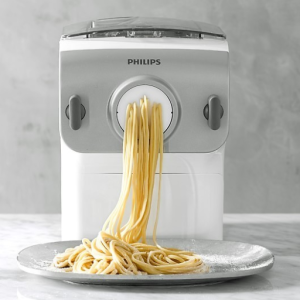
Using a noodle maker can make your homemade pasta-making experience better. You make the pasta dough with flour and eggs until it smooths. Then, you should portion the dough into smaller parts to not overwhelm the machine. Select how thick or thin you want your noodles from the many settings on the noodle maker, and feed through the rollers, ensuring equal thickness all over. Use a cutting attachment once you achieve the desired thickness of noodles. Dusting freshly cut pieces in flour will prevent sticking while cooking; hence, they should rest for a few minutes before boiling them. Cleanliness is next to godliness; always keep this tool clean and maintained for its longevity and performance optimization. Don’t forget to enjoy yummy homemade pasta!
Step-by-Step Guide to Using a Pasta Roller
- Gather Your Ingredients: Make sure you have the right ingredients; usually, this is all-purpose flour and eggs—measure based on your recipe.
- Mix the Dough: Combine everything in one bowl. Create a well of flour with eggs in the middle, then gradually incorporate the eggs into the flour until you get a rough dough. Knead it on a floured surface until smooth and elastic (about 8-10 minutes).
- Let It Rest: Wrap the kneaded dough in plastic wrap and let it rest at room temperature for at least half an hour. This will relax the gluten, which will later ease rolling.
- Divide It: After resting, cut this dough into four equal pieces. Keep three covered while working on just one piece; this prevents them from drying out.
- Roller Thickness Setting: The pasta roller should be adjusted to its widest setting. Dust some flour on the machine so that it does not stick.
- Roll It Out: Slightly flatten a portion of dough before feeding it through rollers. Repeat, reducing width each time until you achieve the desired thickness.
- Cut The Noodles: Attach the relevant cutter onto the pasta roller, then feed rolled-out pasta through it for preferred shapes of noodles.
- Dust and Dry: Sprinkle a light amount of flour on freshly cut pasta to avoid sticking together, either as you hang them for drying or place them gently over a floured surface if they are not cooking immediately.
- Cook And Enjoy: Boil salted water in a large pot before adding fresh homemade pasta. Depending on thickness, cook between 2-4 minutes, then drain well and serve with the sauce of choice.
This guide guarantees maximum usage of a pasta roller while making simple yet mouth-watering homemade pasta.
Tips for Rolling and Cutting the dough
- Use a lot of flour: When rolling pasta, always spread flour on your work surface and pasta roller so it doesn’t stick. This will help you roll it and cut the pasta into cleaner shapes.
- Cover dough portions: While working with one piece of dough, keep the rest wrapped in plastic or covered with a cloth to prevent them from drying out and becoming difficult to roll.
- Don’t rush it: Take your time feeding the dough through the rollers. Gradually decrease the thickness setting instead of skipping steps for evenness throughout your pasta.
- Check for consistency: As you roll out the dough, feel it with your hands for any spots that may be too thin; they can always have another pass through the rollers to make them even.
- Experiment with shapes: Once you get comfortable cutting noodles using a pasta roller, try different attachments, such as fettuccini, lasagna, or tagliatelle, which will give you more options for homemade pasta.
What Are the Benefits of Making Homemade Noodles?
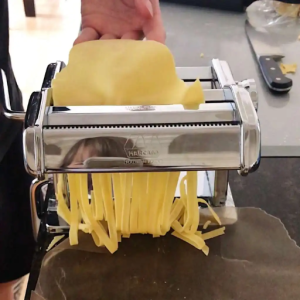
Making homemade noodles has several benefits that boost culinary encounters and nutritional value. The first advantage is controlling the ingredients used; thus, one can select good-quality flour and fresh eggs while avoiding preservatives and other additives found in most store-bought products. Secondly making noodles promotes creativity since different flavors can be made depending on ones preference. Also they provide comfort because when someone prepares something from scratch there comes that feeling of satisfaction. Finally, fresh noodles have better texture and taste compared to dried versions, which enhance overall dish quality.
Health Benefits of Fresh Pasta
Fresh pasta has many benefits over dried pasta. One significant benefit is its increased moisture content, making it more digestible. Additionally, the use of simple ingredients such as flour and eggs in making fresh pasta means there are fewer preservatives and additives — so you can have a cleaner meal that is healthier, too! Furthermore, fresh pasta can include whole grain flour or other ingredients that increase fiber and protein content for nutritional enhancement. Also, because of its softness when cooked or boiled, this type of noodle can be served with nutrient-dense sauces or toppings, thus encouraging the consumption of vegetables and lean proteins. In conclusion, if we opt for fresh pasta instead of dried pasta, our meals will become more nutritious and wholesome overall.
Cost Comparisons: Homemade Vs. Store-Bought pasta
When comparing the costs of homemade and store-bought pasta, it is generally more affordable to make homemade pasta. This may seem surprising considering that for a batch large enough for multiple servings, typically, only between $1 and $3 needs to be spent on flour and eggs, and on the other hand, packaged pasta ranges in price from just one dollar for primary dried varieties up to five or more dollars per package for premium options. However, sometimes we should value quality over convenience, so if you care about what’s good for your taste buds as well as nutrition, then making fresh pasta at home might offer better bang for your buck than anything available in stores, which can’t compete with that level of freshness! But don’t forget about all those hours pounding away in front of boiling pots – some people think such sacrifices are worth every minute because nothing beats authentic Italian cuisine made from scratch like Mama used to do. Overall, convenient quick-fix meals usually call for store-bought stuff, while cooking larger meals allows us better culinary outcomes when done correctly.
Customizing Your Pasta Shapes and Flavors
To make your cooking creations more exciting, you can adjust the shapes and flavors of pasta. With adjustable methods for shapes, you can create fettuccine, ravioli, or farfalle at home. For example, a pasta machine could ensure even thickness for various shapes, while a simple knife can create diverse noodle styles.
In terms of taste, adding spinach, beetroot, or herbs to the pasta dough will give it color and unique flavors. Also, garlic powder or smoked paprika, among other spices, can be mixed to improve its flavor profile. Experimenting with different flours like semolina or whole wheat adds texture and nutrients, hence making the meals more interesting but still representing your preferences in terms of what you eat.
Can You Make pasta Easily with a Kitchenaid pasta Attachment?
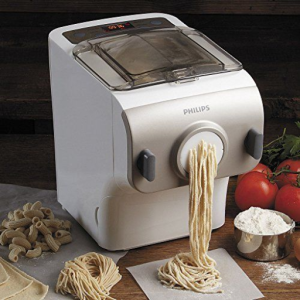
Indeed, it is easy to make pasta through a KitchenAid pasta attachment. This adaptable device simplifies making pasta by kneading and rolling out the dough efficiently until you achieve your preferred thickness. Usually, this accessory has several rollers and cutters that enable you to create different shapes of pasta. Time-saving and uniformity in results are among the many benefits of using a KitchenAid mixer; hence, homemade pasta becomes an easy and enjoyable task.
Using the pasta maker attachment for the Kitchenaid Stand Mixer
To use effectively the Pasta Maker Attachment on your Kitchen Aid Stand Mixer, first assemble it following the instructions given by its manufacturer. Mix flour and eggs in a bowl to make the dough, which should be kneaded until smoothness is achieved and then divided into smaller portions for easy handling. With the broadest setting selected, feed one piece of dough through at a time, narrowing gradually until the desired thickness is obtained. When the sheet reaches the required thinness, change over to cutter attachment so that fettuccini or lasagne can be produced, among other shapes preferred for your pasta type. Flouring the finished product prevents sticking before storage or cooking; thus, do not forget this step when enjoying fresh homemade noodles made within minutes.
Advantages of the Kitchenaid Over Other Pasta Machines
The KitchenAid pasta attachment has many benefits over traditional pasta machines. First, it makes pasta easier by being compatible with the KitchenAid Stand Mixer; this eliminates the need for multiple appliances and reduces cleaning time. Additionally, this attachment ensures uniform thickness using adjustable settings, thus allowing one to control exactly how they want the texture of their noodles to be. A lot of people find different types of pasta can be made because rollers and cutters are interchangeable, which is made possible by various sizes being fitted into them easily. Also, when it comes to durability and quality, you can always trust any product from KitchenAid since they are built strong enough even for commercial kitchens; hence, such an investment will serve someone for a lifetime, especially if they love cooking at home where reliability matters most in terms of tools used.
What Are the Best Pasta Makers to Find in 2024?
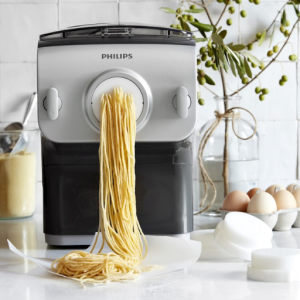
When we consider 2024, several pasta manufacturers are worthy of recognition for their innovation, performance, and customer satisfaction. Once again, the KitchenAid Pasta Attachment tops this list because it can be used easily and seamlessly integrates with other appliances like the KitchenAid Stand Mixer. For an electric option, there’s nothing better than Marcato Atlas Electric Pasta Maker, known widely for its strong build quality and ability to produce various types of pasta without much effort required on your part; that’s why people love it so much! Those who prefer hand-cranked machines will be delighted by Imperial Pasta Machine – not only does this device boast great longevity but also features perfect balance between manual operation and sturdiness which makes traditionalists’ hearts sing with joy. Lastly, we have Philips Pasta Maker – this gem is appreciated mainly for its automation that lets you enjoy fresh homemade spaghetti at home whenever you feel like having some; you all need to push the button. All these machines come with different benefits meant for diverse cooking styles; hence, any pasta lover should find something suitable for them in their kitchen.
Top Rated Atlas 150 pasta machine and Marcato Atlas 150 pasta machine
Home and professional cooks highly regard the Atlas 150 Pasta Machine for its excellent quality and performance. This manual pasta maker comes with adjustable thickness settings so that you can make pasta sheets of different sizes according to your preference. Its robust aluminum build and chrome-plated finish have been mentioned in many reviews as features that add to its longevity while making it easy to clean. Users love that it has pasta cutter attachments that enable them to quickly prepare various shapes of pasta, like fettuccine or tagliatelle.
For its simplicity, stylishness, and consistent results, the Marcato Atlas 150 is always described as such on sites such as Amazon, Williams-Sonoma, and Chef’s Resource. Most clients talk about how this machine operates smoothly with accurate adjustments, thus making the process of making fresh homemade pasta enjoyable and fulfilling. In summary, if you are an enthusiast of homemade pasta, Atlas 150 should be among your top choices because it is versatile but also dependable.
User Reviews and Ratings for the best electric pasta makers
According to user reviews, the top contenders among electric pasta makers are usually the Philips Pasta Maker, KitchenAid Pasta Roller, and CucinaPro Pasta Maker.
- Philips Pasta Maker: Users rave about how simple it is to use this machine and how quickly they can make different types of pasta in just ten minutes. Many also like that all parts are removable, which makes cleaning easy. Some have reviewed that consistency in texture as well as taste with other machines has never happened before.
- KitchenAid Pasta Roller: Many people mention its compatibility with KitchenAid stand mixers. Many reviewers love the sturdy construction of this appliance but also mention its versatility when it comes to making different styles of pasta. Most feedback centers around the operation being smooth enough for precision evenness, which is greatly appreciated by those who say so because such sheets work best for various recipes.
- CucinaPro Pasta Maker: According to customer ratings, this electric model is affordable without compromising quality. A small kitchen is perfect for compact designs like these, and beginners always look out for simplicity when using them. Reviewers often talk about satisfaction achieved, especially while using fresh ravioli or lasagna sheets.
All in all, these machines are great because of their homemade-friendly design and their quickness at producing pastes that can be used by anyone regardless of skill level or preference in culinary arts.
How to Make and Store Your Fresh Homemade Noodles?
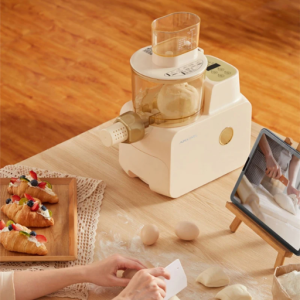
To create homemade and fresh noodles, first combine flour with eggs in a bowl (a widely used proportion is 2 cups of flour for every 3 large eggs). Knead the mixture until it becomes smooth, then let it rest for about thirty minutes. Roll thin sheets of dough using your pasta maker or rolling pin before cutting into the desired noodle shape.
Fresh noodles can be stored by drying or refrigerating them. If you opt for dry, lay them on a flat surface or drying rack until completely dry for a few hours, then store them at room temperature in an airtight container. If refrigerating, lightly dust them with flour to avoid sticking together before placing them in an airtight container. For optimal quality, consume them within two to three days.
Best Pasta Dough Recipes
- Classic Egg Pasta Dough: This recipe is simple but effective. Combine 2 cups of all-purpose flour, three large eggs, and a pinch of salt until you have dough, then knead for about eight to ten minutes until it becomes smooth. Let the mixture rest for half an hour before rolling it out.
- Semolina Pasta Dough: If you prefer a firmer texture in your pasta, use semolina flour instead. Start with 1 cup semolina flour and add 1/2 cup all-purpose flour and one large egg (add water if needed). Knead until smooth; let rest and roll to desired thickness.
- Vegan Pasta Dough: This is another excellent way to make homemade pasta without using eggs. Mix two cups of flour (all-purpose or semolina), a quarter cup of water, and a tablespoon of olive oil; knead for about five minutes, then let sit.
The above grain-based recipes are just some basic ideas for making different types of pasta at home, which promises a delightful dining experience every time!
Techniques for Drying and Storing homemade noodles
- Air Drying: To achieve the best air-drying results, hang the fresh noodles on a pasta drying rack or lay them flat on a clean kitchen towel. It is necessary to ensure that there is enough space between them for air circulation and then leave them for some hours until they are scorched. This way, it retains its texture and prevents sticking.
- Refrigeration: If you plan on using the noodles within a couple of days, dust them with flour lightly to avoid clumping, then store them in an airtight container, which should be placed inside the refrigerator. The freshness of this method can last up to three days.
- Freezing: If you want to keep either dry or fresh ones for extended periods, freeze them. Lay flat in one layer on a baking sheet until solidly frozen before transferring them into a freezer-safe bag or container. With good storage conditions, they can stay safe for use between one month and two months. Do not bother thawing when cooking from a frozen state; just add directly to boiling water.
By following these methods, your homemade noodles will be adequately preserved without compromising their quality or flavor.
Preparing filled pasta for Future Use
To prepare filled pasta for future use, try these:
- Assembly: First, make a filling (e.g., ricotta, spinach, or meat) and then prepare pasta dough. Next, roll it out thinly and cut it into desired shapes (squares, circles, etc.). Place spoonfuls of prepared filling at the center of each shape before sealing the edges tightly to prevent any leakage during cooking.
- Air Drying: After preparing filled pasta, drying it is an option, too. You can air dry it on a floured surface or place it in a pasta drying rack for a few hours, which will help maintain its shape and prevent it from sticking together.
- Freezing: You might also want to freeze filled pasta for later use. All you need to do is put it in one layer over a baking sheet until it is solid, then transfer it into a freezer-safe bag/container to be ready whenever required without having to defrost—it just needs more cooking time.
These methods will keep your filled pasta fresh and tasty while being convenient for quick meals.
Frequently Asked Questions (FAQs)
Q: What are the advantages of using a pasta and noodle maker at home?
A: A pasta and noodle maker at home allows you to create fresh pasta dough easily, ensuring better taste and texture than store-bought dried pasta. It also allows you to experiment with different pasta recipes and customize your gourmet pasta to suit your preferences.
Q: How do I choose the best noodle machine for my needs?
A: To find the best noodle machine, consider factors such as whether you prefer a manual machine or an electric one, the types of pasta you want to make, and any specific features like adjustable thickness settings noodles maker, included pasta sheet roller, and stainless steel noodle rollers that can enhance your pasta making experience.
Q: What is the Philips 7000 Series Pasta Maker?
A: The Philips 7000 Series Pasta Maker is an electric machine designed to help you quickly and easily make various types of fresh pasta at home. Known for its user-friendly interface and versatility, it’s a popular choice for those looking to produce gourmet pasta with minimal effort.
Q: Can I make long noodles like spaghetti with a pasta press?
A: A pasta press can be used to make long noodles like spaghetti. Many models come with different attachments and cutters to create various pasta shapes, including spaghetti, fettuccine, and more. Models like the gourmet pasta press attachment are beneficial for making long noodles.
Q: How do I cut the pasta into different shapes?
A: After rolling out the fresh pasta dough into thin sheets, you can use a pasta cutter or a pasta roller and cutter set to cut the pasta into different shapes. Some pasta makers come with multiple attachments that allow you to cut and shape the pasta dough into various styles, such as spaghetti, lasagna, and fettuccine.
Q: What is included in a pasta maker deluxe set?
A: A pasta maker deluxe set typically includes several attachments and tools to enhance your pasta-making process. Standard inclusions are a pasta roller and cutter, an included pasta sheet roller for making thin sheets of pasta, and various cutters for different pasta shapes. Some deluxe sets also feature a pasta drying rack and cleaning tools.
Q: Is it possible to make pasta without a machine?
A: Yes, you can make pasta without a machine by mixing and kneading fresh pasta dough by hand, then rolling it out with a rolling pin and cutting it into the desired shape with a knife. While this method requires more effort, it can still produce delicious homemade pasta.
Q: Why should I consider adjustable thickness settings in a noodles maker?
A: Adjustable thickness settings in a noodles maker allow you to control the thickness of your pasta dough, which is essential for achieving the right texture and consistency for different types of pasta. This feature helps you create anything from ultra-thin pasta sheets for lasagna to thicker cuts for more robust dishes.
Q: What are the benefits of a pasta roller and cutter set?
A: A pasta roller and cutter set streamlines the pasta-making process by allowing you to roll out even sheets of dough and then quickly cut them into precise shapes. This set is ideal for producing consistent, professional-quality homemade pasta. Models like the redone pasta maker attachment and pressing machine stainless steel 135w are excellent examples of high-quality sets.
Q: How important is having a stainless steel noodle roller in a noodle machine?
A: Stainless steel noodle rollers are essential because they ensure durability and long-lasting performance. They provide a smooth, non-stick surface for rolling out the dough, improving the pasta’s quality and making the cleaning process more manageable. Investing in a noodle machine with stainless steel rollers can significantly enhance your pasta-making experience.












